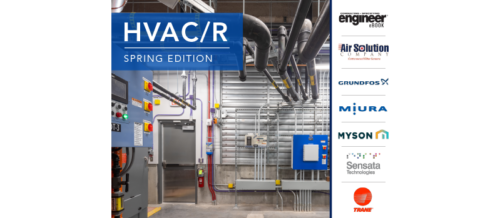Five ways to maintain HVAC efficiently
Prepare HVAC systems to keep up with cooling demand during the summer. Five ways to keep an HVAC system running efficiently are highlighted.
With many facilities beginning to open at full occupancy and as summer inches closer, now is the perfect time to see if a facility’s heating, ventilation, and air-conditioning (HVAC) system is ready to withstand the demand to fill a space with cool air.
With most units running at 100% during the summer months, the wear on the system increases as runtimes get longer, which can affect the system’s efficiency over time. Users shouldn’t wait until the height of summer heat to decide whether their current system needs to be serviced. Reliable cooling is a necessity. Properly servicing and inspecting the system decreases the chances of system breakdowns and the inevitable spike in utility bill cost.
Due to seasonal differences, the demands on the capabilities of HVAC systems aren’t always balanced. But, more issues seem to arise during the hotter times of the year when cooling needs are high. Heating and cooling systems have different processes that explains why there are more issues during those warmer months.
1. Heating
The heating portion of most HVAC systems involves an electric heating coil or gas pilot light being lit with a fan blowing air over the heating mechanism and into the space. For pure ventilation, having some fresh outside air in the space is necessary to relieve stuffiness. To achieve this, the system opens and pulls fresh air in and expels internal air out.
2. Cooling
To cool the equipment, it goes through a mechanical, chemical phase-state process, which uses heat exchange to cool a space a few degrees. The more complicated the process to meet a certain demand, the more runtime and energy the HVAC system needs to meet the demand. This can increase the runtime of the equipment, meaning increases in gas, electricity and/or water bills (depending on what the system primarily uses to operate).
Preparing HVAC systems to run reliably through the whole summer season involves several different maintenance items. Here are some ways to get ahead of any potential issues:
3. HVAC equipment and system tuneup
Schedule a service visit or tuneup sometime in late spring. Ask if there are any immediate issues that would directly impact cooling demand. Worn belts, dirty filters and coils, low refrigerant, bad contactors, noncommunicative controls and anything that negatively impacts the equipment process can impact cooling demand.
4. Economizers
Economizers are mechanical additions to HVAC equipment that help reduce runtime of equipment and increase outside air within facilities. If a facility has economizers installed, ensure that they are properly operating. If there are high spikes in utility costs during hot months, consider installing them on eligible equipment for better energy efficiency.
5. Occupant space and demand assessment
If a facility has a building automation system (BAS) with a frontend or history, the user can look back to the previous summer and identify any patterns in areas of the facility that are used most. Then, consider space reallocation during summer months based on considerations such as rooms with outside-facing windows that tend to require more cooling due to less insulation, older equipment that has naturally depreciated, spaces that have longer in-office hours, etc.
If a facility experienced full shutdowns or less-use and less-occupant demand overall in due to the COVID-19 pandemic, the systems may not be prepared to meet the upcoming full demand on top of summer temperatures. If the equipment or systems have been unused for a long period of time, consider the following steps to take before flipping the switch back on to full demand:
- First, visually check the unused HVAC equipment for any natural disrepair or damage including weather corrosion, possible vandalism or animals using the equipment as temporary shelter.
- HVAC Equipment and System Tune-Up: Schedule a full annual service visit or tuneup sometime in late spring (March–May) with the HVAC team or contractor and request a full conditions report.
A scheduled maintenance with a qualified professional is a fail-safe way to truly verify that a HVAC system is running at peak performance.
This article originally appeared on Southland’s blog, In the Big Room. Southland is a CFE Media content partner.
Original content can be found at www.inthebigroom.com.
Do you have experience and expertise with the topics mentioned in this content? You should consider contributing to our CFE Media editorial team and getting the recognition you and your company deserve. Click here to start this process.





